|
Books Should Be Free Loyal Books Free Public Domain Audiobooks & eBook Downloads |
|
|
Books Should Be Free Loyal Books Free Public Domain Audiobooks & eBook Downloads |
|
Fiction |
|---|
|
Book type:
Sort by:
View by:
|
By: Howard Pyle (1853-1911) | |
|---|---|
 Twilight Land
Twilight Land
The room was all full of twilight; but there they sat, every one of them. I did not count them, but there were ever so many: Aladdin, and Ali Baba, and Fortunatis, and Jack-the-Giant-Killer, and Doctor Faustus, and Bidpai, and Cinderella, and Patient Grizzle, and the Soldier who cheated the Devil, and St. George, and Hans in Luck, who traded and traded his lump of gold until he had only an empty churn to show for it; and there was Sindbad the Sailor, and the Tailor who killed seven flies at a blow,... | |
By: Barry Pain (1864-1928) | |
|---|---|
 Eliza
Eliza
A gentle, yet deliciously humourous series of anecdotes following the life of the main character and his wife, Eliza. | |
By: Justin McCarthy (1830-1912) | |
|---|---|
 The Riddle Ring
The Riddle Ring
This romantic mystery - or mysterious romance - tells the tale of jilted lover, Jim Conrad, who discovers an unusual gold ring while on a visit to Paris. What is the story of the ring? Why is Clelia Vine so sad? Who is the nameless 'chief'? And how is a dour English barber in a Parisian salon mixed up in all this?The novel, published in 1896, was written by Justin McCarthy, an Irish nationalist, Liberal historian, novelist and politician. (Introduction by Ruth Golding) | |
By: Anonymous | |
|---|---|
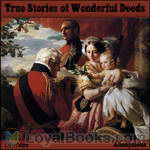 True Stories of Wonderful Deeds
True Stories of Wonderful Deeds
37 short pieces perfect for newer recorders. These one page Stories of (mostly) Wonderful Deeds were written for Little Folk to teach them about famous incidents in their history. Bonnie Prince Charlie, Nelson and Hardy, Bruce and the Spider, David Livingston, Canute, Sir Philip Sydney, and Elizabeth and Raleigh are just some of the well known people and incidents covered in short stories. | |
By: Richard Marsh (1857-1915) | |
|---|---|
 Amusement Only
Amusement Only
This is a collection of 12 short stories of mystery and humor, which are, as the title says, for amusement only. | |
By: Maurice Leblanc (1864-1941) | |
|---|---|
 The Crystal Stopper
The Crystal Stopper
During a burglary at the home of Deputy Daubrecq a crime is committed, and two accomplices of Arsène Lupin are arrested by the police. One is guilty of the crime, the other innocent, but both will be sentenced to death. Lupin seeks to deliver the victim of a miscarriage of justice, but struggles against Deputy Daubrecq's ruthless blackmailer, who has an incriminating document hidden in a crystal stopper. | |
By: A. A. Milne (1882-1956) | |
|---|---|
 The Sunny Side
The Sunny Side
The Sunny Side is a collection of short stories and essays by A. A. Milne. Though Milne is best known for his classic children's books, especially Winnie The Pooh, he also wrote extensively for adults, most notably in Punch, to which he was a contributor and later Assistant Editor. The Sunny Side collects his columns for Punch, which include poems, essays and short stories, from 1912 to 1920. Wry, often satirical and always amusingly written, these pieces poke fun at topics from writing plays to lying about birdwatching. They vary greatly in length so there is something for everyone. | |
By: Camille Flammarion (1842-1925) | |
|---|---|
 Omega: The Last Days of the World
Omega: The Last Days of the World
Omega: The Last Days of the World is a science fiction novel by astronomer Camille Flammarion. On 25th century Earth, a comet is on a path to collide with the Earth ending it all. Astronomers predict different scenarios as to how they will all die depending on the chemical composition of the comet. Omega probes the philosophical and political consequences that arise as the human race faces the end of the world. | |
By: Various | |
|---|---|
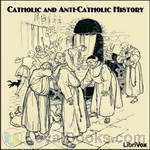 Catholic and Anti-Catholic History
Catholic and Anti-Catholic History
G.K. Chesterton and James Walsh join Hilaire Belloc in an energetic rollout of the means by which history becomes propaganda, to the damage, not only to truth, but to the human soul. | |
By: Arnold Bennett (1867-1931) | |
|---|---|
 Self and Self-management: Essays about Existing
Self and Self-management: Essays about Existing
Bennett's essays always provide food for thought and bring a wry smile to the lips. Human nature, it appears, changes little over the ages, and Bennett's writing stands the test of time, though in the case of some of the essays in this eclectic collection, it is well to remember that they were written at the time of the First World War and the fight for women's suffrage. | |
By: Richard Harding Davis (1864-1916) | |
|---|---|
 The Lost House
The Lost House
Austin Ford, the London correspondent of the New York Republic, is spending some idle time in the American Embassy chatting with the Second Secretary, when suddenly a note is brought in. This note is an appeal for help, found in the gutter in a dark alley. The writer claims to be a young girl, who is kept against her will locked up in a lunatic asylum by her uncle. Although the Second Secretary tries to convince him that there is nothing to it, the journalist is determined to follow the lead... | |
By: Charlotte Turner Smith (1749-1806) | |
|---|---|
 The Old Manor House
The Old Manor House
The proud, cruel and arrogant Mrs. Rayland never married. Therefore, "Rayland Hall", the old Manor House of the title, had to pass to their heir, Somerive, whom they never treated kindly. According to the British laws at the time, the heir must be the oldest son. But what is to be done when the second son is more worthy of it - and is more beloved by Miss Rayland herself? And must the fact that he is in love with a servant and dependent of Miss Rayland take its toll? | |
By: Bret Harte (1836-1902) | |
|---|---|
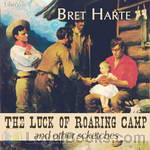 The Luck Of Roaring Camp And Other Sketches
The Luck Of Roaring Camp And Other Sketches
Bret Harte (1836–1902) was an American author and poet, best remembered for his accounts of pioneering life in California.... He moved to California in 1853, later working there in a number of capacities, including miner, teacher, messenger, and journalist. He spent part of his life in the northern California coastal town of Union (now known as Arcata), a settlement on Humboldt Bay that was established as a provisioning center for mining camps in the interior.... In 1868 he became editor of The Overland Monthly, another new literary magazine, but this one more in tune with the pioneering spirit of excitement in California... | |
By: Rev. Gerald T. Brennan | |
|---|---|
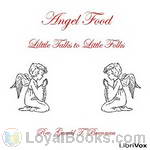 Angel Food: Little Talks to Little Folks
Angel Food: Little Talks to Little Folks
"Angel Food" consists of a series of short sermons for children on the truths of the Catholic Faith - but told with engaging stories, in a style and simple language that children can understand.The author was a parish priest in New York for many years during the mid 1900's. He was the author of several books for children, the most well known being the books in what is considered the "Angel Food" series. | |
By: Charles Morris (1833-1922) | |
|---|---|
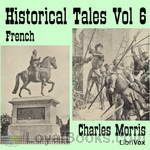 Historical Tales, Vol VI: French
Historical Tales, Vol VI: French
Volume VI of a series containing anecdotes and stories, some well-known, others less so, of particular countries. This fifth volume covers the history of France from the Hun invasion of Europe in the 5th century up to the Prussian War, describing history for children and young adults in an exciting and novel manner. (Introduction by Kalynda) | |
By: Ellis Parker Butler (1869-1937) | |
|---|---|
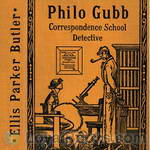 Philo Gubb, Correspondence-School Detective
Philo Gubb, Correspondence-School Detective
Philo Gubb, not being content with his job as wallpaper-hanger, has higher aspirations: to become a detective, just like Sherlock Holmes. To that end, he enrolls in a correspondence course, where he gets lessons through the mail as well as the necessary disguises for a detective. Philo Gubb, not being really clever or intuitive, or even looking good in those disguises, gets involved in one case after the other - and sooner or later happens to stumble on and solve the crime... Each of these stories... | |
By: Colette (1873-1954) | |
|---|---|
 Barks and Purrs
Barks and Purrs
Barks and Purrs is a collection of seven episodes in the lives of Toby-Dog, a French Bulldog, and Kiki-the-Demure, a Maltese cat, living in a comfortable household. The episodes cover a hot afternoon, a train ride, and what happened when dinner was late or their mistress was ill. We hear about the first fire in autumn, a heavy storm, and about a visitor in the household.Sidonie-Gabrielle Colette-Willy was throughout her life a controversial French novelist. She published around 50 novels; the best known is “Gigi”. | |
By: Jack London (1876-1916) | |
|---|---|
 The Game
The Game
Jack London wrote at least four stories about boxing; A Piece of Steak (1909), The Mexican (1911), The Abysmal Brute (1911), and The Game (1905). The Game is told, in part, from the point of view of a woman, the fiancée of one of the competitors. This is to be his last fight and they are to be married on the morrow. Against her better judgment, she agrees to watch the bout. (Introduction by Tom Crawford) | |
By: Eleanor H. Porter (1868-1920) | |
|---|---|
 Miss Billy Married
Miss Billy Married
At the opening to this second sequel to Miss Billy (Miss Billy, Miss Billy's Decision, Miss Billy Married), we find Bertram and Billy finally at the altar. Will wedded bliss ensue and are the patter of little feet on the horizon? Or is misunderstanding and heartache in the cards again? Find out in Miss Billy Married! | |
By: Stendhal | |
|---|---|
 The Red and the Black, Volume I
The Red and the Black, Volume I
Stendhal - a German pen-name for a French writer who hated the English. Contemporary to some of the great names of French literature like Balzac and Flaubert, Stendhal is quite often considered a writer that doesn't seem to fit a defined genre. Some say he's a Romantic, others that he's a Modernist and that Le Rouge et Le Noir is the first modern novel. On one point they are all agreed: the novel is a masterpiece that shows a young theology student - Julien Sorel - intelligent, handsome and who is determined to rise above his humble peasant origins... | |
By: Marie Corelli (1855-1924) | |
|---|---|
 Ziska
Ziska
The story revolves around the mysterious Princess Ziska, who captivates a set of European tourists who are spending time in exotic Egypt. The story is a mystery involving reincarnation, romance & a touch of mild horror. (introduction by ilianthe) | |
By: Caroline Snowden Guild | |
|---|---|
 Violet: A Fairy Story
Violet: A Fairy Story
A charming fairytale -- with realistic touches -- from the mid-19th Century. | |
By: Katherine Mansfield (1888-1923) | |
|---|---|
 In a German Pension
In a German Pension
The first collected volume of short stories of the New Zealand modernist. Inspired by her own travels, Mansfield begins to refine her craft with a series of tales which depict German life at the brink of the first world war. (Introduction by S. Kovalchik) | |
By: Saki (1870-1916) | |
|---|---|
 The Toys of Peace
The Toys of Peace
This is the fifth collection of short stories by Saki (H.H. Munro), and was published posthumously in 1923. Even so, many of the stories are quite up to the standard of those collected earlier. | |
By: Richard Harding Davis (1864-1916) | |
|---|---|
 The Make-Believe Man
The Make-Believe Man
Adventure was what our protagonist was looking for, when he boarded the steamer "Patience" for his holiday, and when one has a man with such a vivid imagination like Joseph Forbes Kinney as a travel companion, who seems to find adventures at every turn of the road (and if not, he manufactures them), the two travellers are sure to stumble into trouble... | |
By: William Hope Hodgson (1877-1918) | |
|---|---|
 Carnacki, The Ghost Finder
Carnacki, The Ghost Finder
Thomas Carnacki was a detective of the supernatural, created for a series of short stories by Wiliam Hope Hodgson. Hodsgon, also a noted photographer and bodybuilder, might have created more stories for this intrepid sleuth of the occult, but he unfortunately died at the youthful age of 40 in World War I. (Introduction by Samanem) | |
By: Murray Leinster (1896-1975) | |
|---|---|
 The Ambulance Made Two Trips
The Ambulance Made Two Trips
Big Jake Connors is taking over his town through violence, inimidation and bribery but Detective Sergeant Fitzgerald can only grind his teeth in frustration. The gangsters seem to have everything going their way until the day that a little dry cleaning establishment declines their offer of 'protection' and strange things start to happen. Murray Leinster gives us another wonderful product of 'what if' from his limitless imagination to enjoy in this gem of a story. Listen and smile. | |
By: Pansy | |
|---|---|
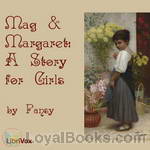 Mag and Margaret: A Story for Girls
Mag and Margaret: A Story for Girls
Little Mag Jessup is an orphan girl who works hard as a servant in Mrs. Perkins' boarding house to earn her keep. She has no education, except what she has picked up on her own. Her future looks unchanging until she is given, on a whim, a devotional book called "Little Pillows," in which she learns that she is valuable to God as His child. She endures trials from many fronts and the prejudice of haughty, rich Margaret, with whom she has more in common than she thinks, on her journey with God. (Introduction by TriciaG) | |
By: William Hazlitt | |
|---|---|
 The Plain Speaker: Opinions on Books, Men, and Things
The Plain Speaker: Opinions on Books, Men, and Things
The Plain Speaker: Opinions on Books, Men, and Things is a posthumous collection of essays by William Hazlitt, organized by his grandson, William Carew Hazlitt. The book contains some of Hazlitt's more famous essays that hadn't been previously published in book format. | |
By: Edna Ferber (1885-1968) | |
|---|---|
 One Basket
One Basket
This sparkling collection of 7 short stories by Ferber including some that are considered her all time best like The Woman Who Tried To be Good and The Maternal Feminine. Writing for and about women, Edna Ferber touches the very heart and soul of what it means to be human; to make good choices and bad; to be weak and strong. This was a very popular book when published in 1913 | |
By: Pansy | |
|---|---|
 Tip Lewis and His Lamp
Tip Lewis and His Lamp
Tip Lewis is a mischievous, unpromising scamp. One Sunday, a visiting Sunday school teacher tells his mission class how her minister had grown up in similarly bad circumstances, but had decided to follow God and had never regretted it. Tip decides to try to BE somebody, like that minister did. He is given a Bible - his lamp - to use as a guide, and from there, his life begins to change. (Introduction by TriciaG) | |
By: Harriet Beecher Stowe (1811-1896) | |
|---|---|
 The Pearl of Orr's Island
The Pearl of Orr's Island
Go on a journey to the coast of Maine and immerse yourself in the picturesque community on Orr’s Island. See the raindrops glistening on the pine needles and hear the waves crashing on the rocks. This is a tale of romance, tragedy, crusty sea captains, an impetuous boy, a loving girl, complete with village gossips and twists in the plot. | |
By: Poul Anderson (1926-2001) | |
|---|---|
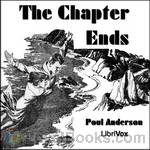 The Chapter Ends
The Chapter Ends
Far, far in the future the Earth is still spinning around the Sun, on the edge of the galaxy, dozing in obscurity, forgotten by it's trillions of progeny and completely irrelevant. But this doesn't matter to the few millions who still live there in simplicity and quiet happiness. But then interstellar politics dictates that they must all leave Earth because ... well, listen to the story as told by the great Poul Anderson as he explores what the Earth means to humans and to one man in particular. | |
By: William Dean Howells (1837-1920) | |
|---|---|
 The Rise of Silas Lapham
The Rise of Silas Lapham
The Rise of Silas Lapham is the most widely read of W.D. Howells’ novels. An example of literary realism, the story is about a farmer (Silas Lapham) who launches a very successful paint business, and moves his family up the social ladder of Boston. Lapham, however, is not one of the new types of American businessman, the ruthless plutocrat, rather he is the old-fashioned trustworthy Yankee trader, and the story deals with how he fares in the industrial capitalist environment. It is also a novel of manners, telling the story of the courtship of a daughter, and the difficulties the family deals with in attempting to move from one social class to another. | |
By: Owen Wister (1860-1938) | |
|---|---|
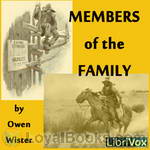 Members of the Family
Members of the Family
Members of the Family is a collection of eight short stories about people in the Wyoming Territory in the late 19th and early 20th centuries. | |
By: Justin McCarthy (1830-1912) | |
|---|---|
 Red Diamonds
Red Diamonds
In the South African wilderness, six men got together to mine for diamonds and become very rich. They agree that the wealth is to be split equally between them or their heirs after a few years and that the share of any one who died without leaving an heir or whose heir died before the time would be split between the remaining partners. Soon, all heirs are notified and wait expectantly for the first of January, on which the diamonds are to be divided between the partners. However, the diamonds are becoming increasingly blood stained, and January the first is still some time off... | |
By: Neil Munro (1863-1930) | |
|---|---|
 Doom Castle
Doom Castle
Doom Castle is the story of young Count Victor's journey to Scotland after the Jacobite Rebellion, searching for a traitor to the Jacobite cause as well as a mysterious man under the name of "Drimdarroch", whom he swore revenge. After a perilious journey, Count Victor arrives at Doom Castle as a guest of the enigmatic Baron of Doom, his two strange servitors and his beautiful daughter... (Summary by Carolin) | |
By: John Ackworth (1854-1917) | |
|---|---|
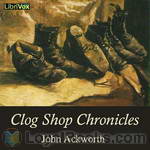 Clog Shop Chronicles
Clog Shop Chronicles
John Ackworth was the pen name of the Rev. Frederick R. Smith, a Methodist minister who was born in Snaith, Yorkshire, but spent much of his career as a circuit preacher in Lancashire. Clog Shop Chronicles was the first and most successful of his works. Set in the fictional 19th-century village of Beckside (said to be somewhere between Manchester and Bolton), the book consists of 12 tales of everyday life in a close-knit Methodist community, which continue into Beckside Lights (1897) and Doxy Dent (1899)... | |
By: Elizabeth Gaskell (1810-1865) | |
|---|---|
 Round the Sofa
Round the Sofa
Round the Sofa (1859), is a book of stories by the lady that Charles Dickens called his “dear Scheherazade” due to her skill as a story teller. That Lady was Mrs. Elizabeth Gaskell (North and South, Wives and Daughters, Cranford etc.). Mrs. Gaskell begins with Round the Sofa, a short story which she uses as a device to stitch together six previously published stories into a single work. It introduces us to a set of characters who take turns to recount stories to one another during their weekly soirée... | |
By: Miriam Michelson (1870-1942) | |
|---|---|
 A Yellow Journalist
A Yellow Journalist
Rhoda Massey is a young, sharp reporter for a daily newspaper in San Francisco. After proving herself an astute and fearless investigator on her first big story, she spends most of her waking hours running down leads and doing (almost) anything it takes to produce headline grabbing tales and to be the first one to do so. She must compete with her male colleagues where she works but also with those from other newspapers. Rhoda discovers it useful to be pretty and small in stature (great for eavesdropping from tight and unusual locations) but it's her shrewd mind and her nose for news that propel her to pursue stories in dangerous places and, sometimes, from dangerous characters... | |
By: Zona Gale (1874-1938) | |
|---|---|
 Miss Lulu Bett
Miss Lulu Bett
Lulu Bett is a spinster, living at the turn of the 20th century essentially as a servant with her sister Ina and brother-in-law Dwight. She is, uncomplainingly, "the family beast of burden," living in the background and tending to the family's needs. It therefore surprises everyone, Lulu included, when Dwight's visiting brother Ninian proposes to her, and she accepts. The surprise is even greater when Lulu returns home alone from their homeymoon trip, with the news that Ninian was already legally married before he married her... | |
By: Eden Phillpotts (1862-1960) | |
|---|---|
 The Flint Heart
The Flint Heart
The flint heart is a stone of heart shape, forged in prehistoric times, that changes whoever owns it into a wicked person. The story of the flint heart's ultimate defeat involves multiple trips into fairyland by Charles and Unity, children of one of the heart's victims. Along the way the reader meets lots of fun characters such as the king of fairyland, a talking (and wounded) hot water bottle, and the mysterious Zagabog. Occasional references to British words and concepts may require some explanation for American readers, but the story is perfectly understandable without such explications. The droll narration makes the story as much fun for adults as for children. | |
By: Louis Ulbach (1822-1889) | |
|---|---|
 The Steel Hammer
The Steel Hammer
A large inheritance greatly transforms the lives of three people: a good man, who would have inherited at least a part of the fortune if his uncle hadn't passed away before he could alter the will, his cousin, who inherits all but is prevented from enjoying it, and a gambler, who is in desperate need of such a sum of money. The connection of the three ends fatal for at least one of them. | |
By: Various | |
|---|---|
 The Night Side of New York
The Night Side of New York
This nonfiction collection of sketches, by "members of the New York press," takes the reader on a tour of 1866 New York City after dark, with stops along the way to vividly depict scenes ranging from the splendid to the squalid - but focusing largely on the latter! | |
By: H. G. Wells (1866-1946) | |
|---|---|
 The Secret Places of the Heart
The Secret Places of the Heart
Richard Hardy, a member of the British gentry, tries to resolve problems in his marriage as he travels with a psychiatrist. The book is to a great extent autobiographical. H. G. had read some brilliantly composed articles by a writer who wrote under the name Rebecca West. In one piece she called H. G. "pseudo-scientific." He contacted her and asked what she meant. When they met for lunch, it was the beginning of a very intense and volatile relationship. Soon she was pregnant, so he divided his time between her and his wife Jane with their two sons... | |
By: Myrtle Reed | |
|---|---|
 At The Sign of The Jack O'Lantern
At The Sign of The Jack O'Lantern
This begins with an odd inheritance at the end of a honeymoon, both parties being inexperienced. Then someone comes to visit, then another, until we've got a chaotic bedlam of New England's tragically off the wall odd-ball relations. Our protagonists may not communicate efficiently at first but at least they've got a sense of humours. The humourous style keeps up as well as some moments of lustre and rich feeling about the printed word itself. (Introduction by D. Wor) | |
By: David Hilbert (1862-1943) | |
|---|---|
 Mathematical Problems
Mathematical Problems
Lecture delivered before the International Congress of Mathematicians at Paris in 1900 and subsequently published in the Bulletin of the American Mathematical Society Vol. 8 (1902), 479-481. | |
By: Ambrose Bierce and Adolph de Castro (1842-1913) | |
|---|---|
 The Monk and the Hangman's Daughter
The Monk and the Hangman's Daughter
MANUAL OF SURGERY, OXFORD MEDICAL PUBLICATIONSBY ALEXIS THOMSON, F.R.C.S.Ed.PREFACE TO SIXTH EDITION Much has happened since this Manual was last revised, and many surgical lessons have been learned in the hard school of war. Some may yet have to be unlearned, and others have but little bearing on the problems presented to the civilian surgeon. Save in its broadest principles, the surgery of warfare is a thing apart from the general surgery of civil life, and the exhaustive literature now available on every aspect of it makes it unnecessary that it should receive detailed consideration in a manual for students... | |
By: Plato (424-348 BC) | |
|---|---|
 Laws
Laws
Νόμοι (Laws) is Plato's final dialogue written after his attempt to advise the tyrant Dionysius II of Syracuse. The dialogue takes place between: an Athenian Stranger (Socrates? A god in human form?); the quiet Lacedaemonian Megillus; and the Cretan Cleinias. The Stranger asks whether humans live to be more effective at waging war or if there is something more important a legislator should seek to achieve. During their pilgrimage Cleinias discloses his role in the establishment of a new colony... | |
By: James B. Hendryx (1880-1963) | |
|---|---|
 Snowdrift
Snowdrift
The story revolves around Carter Brent, an alcoholic and gambler who had struck gold many times in the Yukon, but gambled and drank it away in Dawson; and Snowdrift, the half-breed who had spent her life with a wandering band of Indians in the frozen north country. Snowdrift had been raised by Wananebish, yet never knew who her father was, and yet Wananebish had somehow been able to send her to be schooled at a nearby mission.The paths of this unlikely pair would cross in the barren lands of the Yukon where Brent had hopes of finding more gold, but it was well known that there was no gold in the region between Dawson and the MacKenzie... | |
By: Harold Bell Wright (1872-1944) | |
|---|---|
 Their Yesterdays
Their Yesterdays
The story of a man and a woman, as they experience The Thirteen Truly Great Things of Life: Dreams, Occupation, Knowledge, Ignorance, Religion, Tradition, Temptation, Life, Death, Failure, Success, Love, and Memories.(Introduction by Megan Kunkel) | |
By: Stella M. Francis | |
|---|---|
 Camp-Fire Girls in the Country or The Secret Aunt Hannah Forgot
Camp-Fire Girls in the Country or The Secret Aunt Hannah Forgot
Teen-ager Hazel Edwards and the other twelve members of the Flamingo Camp-Fire Girls experience some real adventure when they are invited to spend part of their summer as guests of Hazel’s elderly aunt on her large country farm. Mrs. Hannah Hutchins is a widow living alone with a few servants and farming assistants in her home in the midwestern town of Fairberry. The girls set up camp on a section of Aunt Hannah’s farm but, before too long, an incident occurs during the annual Fourth of July celebration in Fairberry... | |
By: Henry James (1843-1916) | |
|---|---|
 The Reverberator
The Reverberator
Another Jamesian look at Americans in Paris. What happens when a reporter for an American scandal sheet (The Reverberator) is looking for a good story, though one which might interfere with the marriage plans of a young American woman in the City of Light? This book has been described as "a delicious Parisian bonbon," and its generally good humor stands in contrast with some of the writer's other work. | |
By: G. K. Chesterton (1874-1936) | |
|---|---|
 Wit and Wisdom of Chesterton
Wit and Wisdom of Chesterton
In this collection, Bevis Hillier has put together some of Chesterton's essays in "The Defandant", "Varied Types" and "Tremendous Trifles". These 12 pieces were chosen to giving a peek into the margins of Chesterton's work and give a sense of the distinctive flavor of his mind. They were also chosen with an eye to showing what a complex and fascinating character he was. | |
By: Edgar Pangborn (1909-1976) | |
|---|---|
 The Trial of Callista Blake
The Trial of Callista Blake
MANUAL OF SURGERY, OXFORD MEDICAL PUBLICATIONSBY ALEXIS THOMSON, F.R.C.S.Ed.PREFACE TO SIXTH EDITION Much has happened since this Manual was last revised, and many surgical lessons have been learned in the hard school of war. Some may yet have to be unlearned, and others have but little bearing on the problems presented to the civilian surgeon. Save in its broadest principles, the surgery of warfare is a thing apart from the general surgery of civil life, and the exhaustive literature now available on every aspect of it makes it unnecessary that it should receive detailed consideration in a manual for students... | |
By: Mark Twain | |
|---|---|
 Anti-imperialist writings
Anti-imperialist writings
This audiobook is a collection of Mark Twain's anti-imperialist writings (newspaper articles, interviews, speeches, letters, essays and pamphlets). | |
By: Thomas Hardy (1840-1928) | |
|---|---|
 The Well-Beloved
The Well-Beloved
'The Well-Beloved' tells the story of Jocelyn Pierston and his love for three generations of women - the grandmother, her daughter and grand-daughter over a period of forty years. Pierston is seeking for perfection in his choice of lover and in doing so lets opportunities for happiness pass him by. However, at the end of his life, he finds some kind of contentment in compromise. | |
 The Hand of Ethelberta
The Hand of Ethelberta
Ethelberta was raised in humble circumstances but became a governess and consequently, at the age of 18, married well. However, her husband died two weeks after the wedding. Her father-in-law, Lord Petherwin, died shortly afterwards. Ethelberta (now 21) lives with her mother-in-law, Lady Petherwin. In the three years that have elapsed since her marriage, Ethelberta has been treated to foreign travel and further privileges by Lady Petherwin but restricted from seeing her own family. The story follows Ethelberta's career as a famous poetess and storyteller... | |
By: Annonymous | |
|---|---|
 The Log-Cabin Lady
The Log-Cabin Lady
'The story of The Log-Cabin Lady is one of the annals of America. It is a moving record of the conquest of self-consciousness and fear through mastery of manners and customs. It has been written by one who has not sacrificed the strength and honesty of her pioneer girlhood, but who added to these qualities that graciousness and charm which have given her distinction on two continents.'(from the introduction) | |
By: Cornelia Meigs (1884-1973) | |
|---|---|
 The Windy Hill
The Windy Hill
When two children come to stay with their cousin, they immediately realize something is wrong, but no one will tell them what. Their cousin is strangely altered: nervous, preoccupied, hardly aware of their existence. They soon discover that a conflict is brewing among the hills and farms of the Medford Valley, one whose origins reach back over a century. They must piece it together from scattered clues, and from the stories told to them by a mysterious bee keeper and his daughter. This 1922 Newbery Honor Book tells of the traits that run in a family—honor, stubborn pride, and a dark lust for wealth—and how they shape the destinies of three generations. (Introduction by Peter Eastman) | |
By: Joel Chandler Harris (1845-1908) | |
|---|---|
 Uncle Remus Returns
Uncle Remus Returns
Uncle Remus tells these 11 stories but to the son of the original "little boy" who is visiting his grandmother on the plantation. As always Uncle Remus can be relied upon to provide funny and pointed insight into human personalities through his story telling. These were all published in the Uncle Remus magazine from 1905 and 1906 and gathered together in this book by the author. Note that these stories are reflections of another period in time and some of the language used would definitely be considered rude and/or offensive now. In keeping with the desire to present the text as the author wrote it, nothing has been changed or edited. | |
By: A. A. Milne (1882-1956) | |
|---|---|
 Once a Week
Once a Week
A collection of short stories by famed Winnie the Pooh author, A.A. Milne. This charmingly humorous work from Milne's earlier writing period was first published in Punch magazine. | |
By: John Stuart Mill (1806-1873) | |
|---|---|
 Three Essays on Religion
Three Essays on Religion
The Three Essays on Religion were written at different times during Mill's life, and only published after his death. The first two, 'Nature' and 'The Utility of Religion' date from the 1850s - the period between the publication of 'The Principles of Political Economy' and 'On Liberty'. The third longer essay, 'Theism' was written between 1868 and 1870. The three essays were published posthumously in 1874. | |
By: Charles Waddell Chesnutt (1858-1932) | |
|---|---|
 The Wife of His Youth and Other Stories of the Color Line
The Wife of His Youth and Other Stories of the Color Line
Published in 1899, The Wife of His Youth and Other Stories of the Color Line is a collection of narratives that addresses the impact of Jim Crow laws on African Americans and white Americans of the South. Many of Chesnutt's characters are of mixed-race ancestry which sets them apart for a specific yet degrading kind of treatment from blacks and whites. These stories examine particularly how life in the South was informed through a legacy of slavery and Reconstruction—how members of the “old dominion” desperately struggled to breath life into the corpse of an antebellum caste system that no longer defined the path and direction in which this country was headed... | |
By: Daniel A. Lord (1888-1955) | |
|---|---|
 Clouds Cover the Campus
Clouds Cover the Campus
On an American college campus, in the early years of World War II, a professor from Germany is murdered and the plans for a new bomb sight he had invented are missing. Who murdered the professor and stole the plans? And are the accidents, happening with alarming frequency to young student aviators from the campus, really accidents -- or is some unknown conspiracy afoot?This mystery novel was written by Daniel A Lord, S.J., a priest and popular American Catholic writer. The subjects of the works in his bibliography range from religion, humor, plays, songs, mysteries and even politics. His most influential work was possibly in drafting the 1930 Production Code for motion pictures. ( | |
By: Margaret Burnham | |
|---|---|
 The Girl Aviators and the Phantom Airship
The Girl Aviators and the Phantom Airship
Teenagers Peggy Prescott and her brother Roy share a love of aviation that they inherited from their late father. Mr. Prescott had always dreamed of building an aeroplane that would be free of the defects of planes already invented. Peggy and Roy manage to build a plane starting with the framework their father had begun. Peggy christens it ‘The Golden Buttefly’ and she and Roy are determined to enter it in a young aviator’s contest for a prize of $5000. The Prescotts need the money desperately to save the home they share with their aunt which is about to be taken from them by the rather nasty banker, Mr... | |
By: Dorothy Canfield Fisher (1879-1958) | |
|---|---|
 The Bent Twig
The Bent Twig
Semi-autobiographical series of incidents in the life of an intellectual American family in the late 19th - early 20th Century as seen by favored daughter, Sylvia Marshall. Her father is an economics professor in a Midwestern state university and she is following in his inquisitive footsteps. Canfield writes this in a matter-of-fact manner with Tarkingtonesque good humor. | |
By: Victor Hugo (1802-1885) | |
|---|---|
 The Last Day of a Condemned
The Last Day of a Condemned
A man who has been condemned to death writes down his cogitations, feelings and fears while he is waiting for his execution. He does not betray his name to the reader or what he has done. He describes his life in prison, everything from what his cell looks like to the personality of the prison priest. (Introduction by Wikipedia) | |
By: Elizabeth Stoddard (1823-1902) | |
|---|---|
 The Morgesons
The Morgesons
Stoddard’s novel traces the education and development of a young female in American middle-class society. The protagonist, Cassandra Morgeson, is educated by a series of journeys she makes throughout her youth and early adulthood. Each new setting represents a different stage in her intellectual development.Cassandra is born in Surrey, a small New England town. Surrey is quiet and isolated, granting a young woman little intellectual stimulation. Cassandra escapes the boredom of domestic life through stories of adventure and exploration. Surrey instills in Cassandra a restlessness that drives her quest for knowledge and experience.(Introduction by Wikipedia) | |
By: Rudyard Kipling (1865-1936) | |
|---|---|
 Stalky & Co (More Stories)
Stalky & Co (More Stories)
This small collection puts together stories by Kipling that feature the characters from Stalky & Co. but which for some reason were not included in the book Stalky & Co. Of these the more interesting is the first, “Stalky”, which introduces the characters and is full of the humour and understanding of adolescent males and their timeless jostling with adult powers that characterise the stories in Stalky & Co.“Stalky” was the first of the tales to be written, and was published in 1898, so it is difficult to understand how it came to be omitted from the book in 1899... | |
By: Ella Middleton Tybout (1871-1952) | |
|---|---|
 The Wife of the Secretary of State
The Wife of the Secretary of State
In this political thriller set at the turn of the 20th century, several lives, both of Washington insiders and those on the periphery, intersect over the issue of some stolen diplomatic papers. And what hidden secrets bind Mrs. Redmond, the wife of the Secretary of State, to the unscrupulous Count Valdmir, the Russian ambassador? Politics, power, and intrigue combine in this novel, first published in 1905. | |
By: George Sand (1804-1876) | |
|---|---|
 Indiana
Indiana
This is George Sand's first novel. Her real name was Amantine (or Amandine) Lucile Dupin, and she later became baroness Dudevant. As an aristocratic woman living in 19th century France, she chose her first novel to be, above all, a realistic work. Indiana is trapped since the age of 16 in a loveless marriage with a rich, much older, man. Her only real friend is her cousin, sir Ralph, who, sometimes, just does things which are- logically- the best for her but- mentally- the worsed he could do. She tries to find means of escape. But would she be able to recreate her own reality? Can a woman find true love while trying to maintain her identity and independence in a man's world?" | |
By: Elizabeth Bonhôte (1744-1818) | |
|---|---|
 Bungay Castle: A Novel
Bungay Castle: A Novel
MANUAL OF SURGERY, OXFORD MEDICAL PUBLICATIONSBY ALEXIS THOMSON, F.R.C.S.Ed.PREFACE TO SIXTH EDITION Much has happened since this Manual was last revised, and many surgical lessons have been learned in the hard school of war. Some may yet have to be unlearned, and others have but little bearing on the problems presented to the civilian surgeon. Save in its broadest principles, the surgery of warfare is a thing apart from the general surgery of civil life, and the exhaustive literature now available on every aspect of it makes it unnecessary that it should receive detailed consideration in a manual for students... | |
By: Florence Morse Kingsley (1859-1937) | |
|---|---|
 And So They Were Married
And So They Were Married
This is the story of Elizabeth North a young woman who becomes engaged and with the aid of a social climbing friend begins to plan her wedding beyond what she can afford. Her friend Evelyn Tripp, convinces Elizabeth that she “simply can’t afford” not to live a fashionable and expensive lifestyle. However her husband and her grandma help her to see sense and pull herself out of the debt she has got herself into. | |
By: August Strindberg (1849-1912) | |
|---|---|
 The Red Room
The Red Room
A young idealistic civil servant, Arvid Falk, leaves the drudgery of bureaucracy to become a journalist and author. As he explores various social activities — politics, publishing, theatre, philanthropy, and business — he finds more hypocrisy and corruption than he thought possible. He takes refuge with a group of "bohemians", who meet in a red dining room in Berns Salonger to discuss these matters. (Introduction adopted from Wikipedia) | |
By: Ben Hecht (1894-1964) | |
|---|---|
 Gargoyles
Gargoyles
The author, Ben Hecht, was a prolific writer as well as a renowned screenwriter, producer, and director of films. His screenwriting skills include some of the most popular films of Hollywood's golden era, including "Gone With the Wind", "Wuthering Heights", "Spellbound", and "Scarface", to name but a few.Hecht had already established himself as a novelist and an author of short stories when "Gargoyles" was published. "Gargoyles" delves deep into the psyches of individuals and of their relationships within social classes, revealing both the darker sides and the sentimental sides... | |
By: Unknown | |
|---|---|
 The Drama: A Quarterly Review
The Drama: A Quarterly Review
This is a collection of theatrical essays from the American quarterly The Drama, including six non-fiction works -- 3 profiles: Schnitzler, Andreyev, and O'Neill, and 3 articles: Characterization vs Situation, The Actor in England, & The Evolution of The Actor. | |
By: Francis Godwin (1562-1633) | |
|---|---|
 The Man in the Moone
The Man in the Moone
A self-serving Spaniard discovers a means of traveling to the moon, describing his sensations in transit in terms remarkably consistent with modern astronauts' experiences. He finds on the moon a utopia, which he describes in detail, but being a fallen creature, he takes the first opportunity of coming home. ( | |
By: Henry Rider Haggard (1856-1925) | |
|---|---|
 Pearl Maiden
Pearl Maiden
This is the story of Miriam, an orphan Christian woman living in Rome in the first century. She falls in love with a Roman officer, but knows that her Jewish childhood playmate loves her too and will do anything in order to get her love in return. | |
By: Barbara Hofland (1770-1844) | |
|---|---|
 The Young Crusoe, or The Shipwrecked Boy
The Young Crusoe, or The Shipwrecked Boy
The Young Crusoe, or The Shipwrecked Boy (1829) Novel. At the novel's opening, Charles Crusoe, thirteen years of age, asks his mother if he is related to the famous Robinson Crusoe, and is told that he is not. His future adventures, however, strongly resemble those of the earlier Crusoe. | |
By: Cardinal Nicholas Patrick Wiseman (1802-1865) | |
|---|---|
 Fabiola or The Church of the Catacombs
Fabiola or The Church of the Catacombs
This historical novel is set in Rome in the early 4th century AD, during the time of the cruel persecution of Christians under the Emperor Diocletian. The heroine of the book is Fabiola, a young pagan beauty from a noble Roman family. Fabiola seems to have everything, including a superior education in the philosophers, yet under the surface, she is not content with her life. One day, in a fit of rage, she attacks and wounds her slave girl Syra, who is a secret Christian. The proud, spoiled Roman girl is humbled by Syra's humility, maturity and devotion to her in this situation, and a slow transformation begins... | |
By: Frances Trego Montgomery (1858-1925) | |
|---|---|
 Zip, the Adventures of a Frisky Fox Terrier
Zip, the Adventures of a Frisky Fox Terrier
Zip, a little fox terrier, lives in the town of Maplewood in the house of his owner, Dr. Elsworth. Each day when Dr. Elsworth drives his carriage to visit his patients, Zip goes along with him so that he can keep the doctor company and, most importantly, visit with the other animals in the town. Zip likes to find out all the latest news so that he can tell it to his best friend, Tabby the cat, who also lives with Dr. Elsworth. However, he also finds himself getting into mischief, whether it's trying to solve a burglary, sneaking fried chicken from a picnic, getting stuck in a stovepipe or fighting with Peter-Kins the monkey. Zip is one dog who never has a dull day. | |
By: Owen Wister (1860-1938) | |
|---|---|
 A Journey in Search of Christmas
A Journey in Search of Christmas
Cowboy Lin McLean rides into frontier Cheyenne, Wyoming, at Christmastime and learns a powerful meaning of Christmas. Author Owen Wister is well known for his western writings, famously the novel The Virginian. Illustrations are by the western artist Frederic Remington. | |
By: Edna Ferber (1885-1968) | |
|---|---|
 The Dancing Girls
The Dancing Girls
The Dancing Girls is just one of the 4 excellent short stories in this recording. All written by the master, Edna Ferber for magazines between 1910 and 1919 they naturally contain her unique mix of real people, sadness, joy and always humor. The lead Story, The Dancing Girls, is my favorite for the way she paints a picture of mid America small town society and how good people somehow (and sometimes) can find their way to each other. Other stories in this collection are Old Lady Mandel; Long Distance; and One Hundred Percent | |
By: Washington Irving (1783-1859) | |
|---|---|
 The Alhambra: A Series of Tales and Sketches of the Moors and Spaniards
The Alhambra: A Series of Tales and Sketches of the Moors and Spaniards
This is a collection of essays, verbal sketches, and stories by Washington Irving. Irving lived at the Alhambra Palace while writing some of the material for his book. In 1828, Washington Irving traveled from Madrid, where he had been staying, to Granada, Spain. At first sight, he described it as "a most picturesque and beautiful city, situated in one of the loveliest landscapes that I have ever seen." He immediately asked the then-governor of the historic Alhambra Palace as well as the archbishop of Granada for access to the palace, which was granted because of Irving's celebrity status... | |
By: Upton Sinclair (1878-1968) | |
|---|---|
 They Call Me Carpenter
They Call Me Carpenter
The story takes place in the fictional city of Western City circa 1920. It begins with a man named Billy who is attacked by a mob of ex-servicemen outside a theater after watching a German film. Billy stumbles into a church to escape the mob and is visited by Carpenter, that is Jesus, who walks out of the stained glass window of the church. Carpenter is shocked and appalled by his observations of greed, selfishness, lust, sorrow, and the ultimate division between rich and poor. The story then roughly follows the ministry of Jesus. | |
By: Lilian Gask (1865-????) | |
|---|---|
 The Fairies and the Christmas Child
The Fairies and the Christmas Child
The worst of being a Christmas Child[2] is that you don’t get birthday presents, but only Christmas ones. Old Naylor, who was Father’s coachman, and had a great gruff voice that came from his boots and was rather frightening, used to ask how I expected to grow up without proper birthdays, and I thought I might have to stay little always. When I told Father this he laughed, but a moment later he grew quite grave. “Listen, Chris,” he said. And then he took me on his knee—I was a small chap then—and told me things that made me forget old Naylor, and wish and wish that Mother could have stayed with us... | |
By: Booth Tarkington (1869-1946) | |
|---|---|
 Monsieur Beaucaire
Monsieur Beaucaire
A madcap Frenchman posing as an ambassador's barber blackmails a dishonest duke to introduce him as a nobleman to a wealthy belle of Bath. Since the duke himself hopes to mend his fortunes by wedding this very woman, he attempts to murder Beaucaire, and failing that to discredit him. To test the lady's mettle, Beaucaire allows his deception to be exposed--up to a point--and there we must draw the curtain to preserve the surprise ending. ( | |
By: Vernon Lee (1856-1935) | |
|---|---|
 A Phantom Lover
A Phantom Lover
A Phantom Lover is a supernatural novella by Vernon Lee (pseudonym of Violet Paget) first published in 1886. Set in a Kentish manor house, the story concerns a portrait painter commissioned by a squire, William Oke, to produce portraits of him and his wife, the eccentric Mrs. Alice Oke, who bears a striking resemblance to a woman in a mysterious, seventeenth century painting. | |
By: Pansy (1841-1930) | |
|---|---|
 One Commonplace Day
One Commonplace Day
A temperance lecturer misses his train and ends up attending a town picnic. It was a common enough picnic on a commonplace day. But the discussions, actions, and attitudes from that picnic reverberate through the lives of many people. What are the far-reaching consequences of one commonplace day in OUR lives? | |
By: Henry James (1843-1916) | |
|---|---|
 The Last of the Valerii
The Last of the Valerii
An unnamed American painter resident in Rome serves as narrator in this story, watching as his god-daughter Martha, becomes the wife of Prince Marco Valerio. The young bride is eager to use some of her American fortune in the service of archeology at the Villa Valerio, her husband's somewhat run down Roman house. Archeology can be, her god-father suggests, a rather expensive hobby, but to his (and her) surprise, the dig brings to light a lovely marble statue of Juno. Martha is overjoyed, but it is soon clear that her husband is overcome by the discovery, and overcome in ways that are to be disquieting... | |
By: Eliza Haywood (1693-1756) | |
|---|---|
 The History of Miss Betsy Thoughtless, Volume 1
The History of Miss Betsy Thoughtless, Volume 1
The flirtations of a rich young maiden, Miss Betsy Thoughtless with several suitors, as she alienates the right man by refusing to take the issue of marriage seriously. Because of this her guardian commits her to marriage to the wrong man, a situation over which she has little control. As the heroine describes her fate, this text exposes the institution of marriage, the powerlessness of women and the double standards held during that time.(Introduction by Joyce Martin) | |
By: George Moore (1852-1933) | |
|---|---|
 Celibates
Celibates
The author is considered the first great Irish writer of realist fiction and is said to have been an inspiration for James Joyce. Celibates is a novel of three characters: Mildred Lawson, John Norton and Agnes Lahens.They have nothing in common other than an absolute love of themselves and an inability to sympathize with others. In that vein, it constitutes a striking image of our own modern day self-absorbed society. (Introduction by James Carson) | |
By: Silas Hocking (1850-1935) | |
|---|---|
 Her Benny
Her Benny
A very heart touching story about two homeless children, a brother and sister, living on the streets of Liverpool, England during Victorian times. | |
By: Florence Irwin (1869-19??) | |
|---|---|
 The Mask
The Mask
The mask is the one which we all wear, even though unconsciously, to hide our thoughts and feelings. Alison Terry wore one, though she had never realized it until she faced a crisis in her life. Alison, a girl of sympathetic mood and action whose keen intelligence is overbalanced by the inexperience of innocence and a sheltered upbringing, goes to New York with her erratic husband, Phil Howland. She passes through various stages of disillusionment inevitably resulting from cheap boarding-house life,... | |
By: Henry James | |
|---|---|
 Sir Edmund Orme
Sir Edmund Orme
Henry James wrote a number of ghost stories -- The Turn of the Screw being the most famous. Did he believe in ghosts himself, as did many of his contemporaries? It's generally possible to find earthly interpretations, Freudian and other, for his ghosts. Sir Edmund Orme, though, is unquestionably a real ghost -- except of course that James's unnamed narrator tells the story in the voice of yet a third man, and the narrator himself passes no judgments on the factual nature of what he is reporting (there's a resemblance here to The Turn of the Screw)... | |
By: Dreiser, Theodore (1871-1945) | |
|---|---|
 Hollywood: Its Morals and Manners
Hollywood: Its Morals and Manners
Serialized in Shadowland from November 1921 to February 1922, Hollywood: Its Morals and Manners is Theodore Dreiser's shocking four part expose on the motion picture industry. In it, he shares his observations from his extended stay in Los Angeles, and gives us an intimate look at the seedier underside of Hollywood. | |
By: Harold Bindloss (1866-1945) | |
|---|---|
 Northwest!
Northwest!
Northwest! takes place in western Canada, primarily western Alberta and British Columbia. The story revolves around Jimmy not being sure whether or not he shot and killed a Northwest Mounted while he and some friends were out hunting one day. Not exactly a bushman, he needs to head northwest to avoid capture by the officials who are out to find him and bring him to trial. At least that's what he suspects. Survival in the wilderness for one who was raised in British class proves to be a daunting experience, and we learn of the trials he is to be put through while he is on the lam. | |
By: Various | |
|---|---|
 Short Nonfiction Collection Vol. 026
Short Nonfiction Collection Vol. 026
A collection of short nonfiction works in the public domain. The selections included in this collection were independently chosen by the readers, and the topics encompass history, travel, mathematics, humor, philosophy, and nature. | |
 Insomnia Collection, Vol. 2
Insomnia Collection, Vol. 2
Soporific dullness is in the ear of the listener, and what's tedium incarnate to one person will be another person's passion and delight. However, it is hoped that at least one from the range of topics here presented will lull the busy mind to a state of sweet sleep. (Introduction by Cori Samuel) | |